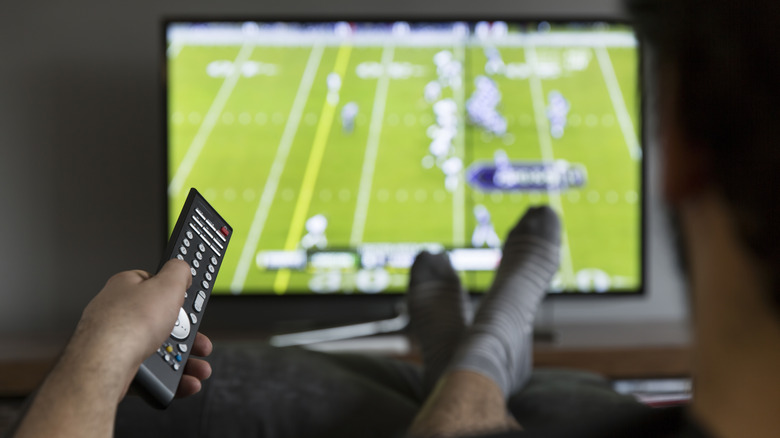The Once-Popular Subscription Americans Aren't Buying Like They Used To
We may receive a commission on purchases made from links.
You might be old enough to remember days when you put an antenna on your home's roof and had access to three or four television networks, or the era when cable and satellite TV were in nearly every home. In the early 2010s, more than 105 million households subscribed to cable television, according to Forbes. However, those days are long gone. Today, IBISWorld reports 66.1 million American households subscribe to cable, a drop of roughly 35% from the peak.
The trend of people canceling cable TV subscriptions is intensifying, with Forbes estimating that over 10 million people canceled subscriptions just in 2022 and 2023. Considering that the cable service comparison website AllConnect reports the average monthly cost of a cable bill can be upwards of $146, retirees who are rethinking the bills they have may be ready to join the trend and drop cable for other entertainment options.
Why are people dropping cable TV? There are several reasons, but many people believe streaming services are cheaper overall and let them pick what they watch — and when they watch it — with more freedom. Some cable TV subscribers believe they're wasting their money because they don't even watch a large percentage of the channels included in their subscriptions. Additionally, younger people have grown up with streaming options and don't feel like they're missing out if they don't have a cable subscription. If you're considering joining the trend and cutting the cord, read on to learn why other entertainment options are becoming popular.
Higher internet speeds make streaming services more accessible
Pew Research Center reports that more that 79% of Americans have an internet subscription. Since they're already paying for this service, adding some streaming services can be more cost effective than paying for cable. This is a popular trend, as an estimated 99% of American households pay for at least one streaming service. An average consumer in the United States has around four streaming services, which Deloitte estimates costs an average of $69 per month.
Most Americans should pay around $70 per month for high-speed internet. That adds up to $139 for internet and four streaming services, which is still less than the upper estimate for a monthly cable cost without an internet subscription bundled.
Don't try to cut internet service costs by agreeing to a lower speed. An individual streamer can watch HD video at around 10 megabits per second. A family with several streams going at once may need speeds of 40 to 100 megabits per second. An individual needs about 25 megabits per second for 4K video streaming, but a family with several simultaneous 4K streams might need 100 to 500 megabits per second. That level of speed may make fast internet feel like one of the things you're paying too much for, but you can always research competitor pricing for better deals. Alternatively, you could potentially save cash by buying and installing your own router and modem instead of renting them from a provider.
Why some people stick with their cable subscriptions
Even though millions of Americans cut the cord every year, you might be unsure whether you should join them. A recent CableTV.com study of people who still subscribe to cable showed that about 26% of subscribers stick with it because they are comfortable with the format and don't want to switch.
Additionally, 27% of subscribers say they stay with cable TV because it simplifies watching live sports. This is understandable, as sports leagues haven't been as quick to embrace streaming as other parties — though many streaming services now provide live sports as well. In 2025, YouTube TV, Peacock, ESPN+, and Netflix all have exclusive rights to at least one NFL game, and Amazon Prime carries an entire season's worth of Thursday night NFL games. One area where cable television outperforms streaming services for sports is in the quality of the broadcast. For highly popular games and events, the picture quality may suffer with a streaming service, while the cable broadcast quality remains steady no matter how many people are watching.
Some people even choose to have both cable TV and streaming subscriptions. According to CableTV.com, 76% of people who have a traditional subscription also subscribe to Netflix. Of the people who bundle internet and another service from one provider, AllConnects reports 58% bundle cable TV and internet together. In many cases, bundles like this can result in discounts on the services, which may prompt some to keep their cable a little longer.


